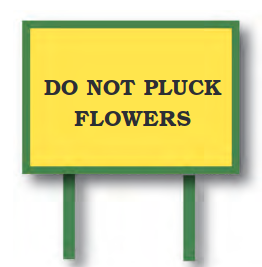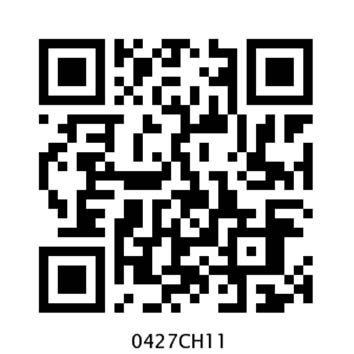Table of Contents
Chapter 11
The Valley of Flowers
In the hills of Uttarakhand there is a place where there are flowers everywhere. This place is called the ‘Valley of Flowers’. In some places, one sees red flowers blooming on bushes, while in others one finds white flowers peeping out between the stones. There are wide areas carpeted with the brightest yellow flowers. And suddenly, elsewhere, blue flowers shining like tiny stars between the grass. All this seems like a beautiful dream, doesn’t it? Yes, because like a dream these flowers bloom only for a few weeks in the year.

Now close your eyes and imagine that you have reached such a place. How does it feel? Which songs do you feel like singing?
-
Have you ever seen so many flowers grow together anywhere? where?
-
How many differently coloured flowers have you seen?
-
Write their colours.
-
Now you were just left counting, weren’t you?
Are there any things in your house which have designs of flowers made on them – like clothes, sheets, vases, etc.?
Here is a floral design in the box below.

The design in the picture is called ‘Madhubani’. It is a very old form of folk art. Do you know why it is called Madhubani? There is a district in Bihar called Madhubani. Here, during festivals and happy occasions, the walls of the houses and their courtyards are painted with such pictures. These paintings are made out of paste of powdered rice in which colour has been mixed. The colours used in Madhubani painting are very special too. To make them, indigo (Neel), turmeric (Haldi), colours from flowers and trees, etc., are used. The paintings show human beings, animals, trees, flowers, birds, etc.
Draw your own design in your notebook and colour it as well.
-
Look at the designs made by your friends as well.
For the teacher: Encourage children to locate Uttrakhand on the map.
The World of Flowers
Here are some pictures of flowers. Mark a (✓) on the flowers which you recognise. Write their names too if you know.
 |  |  |
|---|---|---|
 |  |  |
 |  |  |
-
From the pictures given above, and other flowers that you know, give names of two which
-
grow on trees
-
grow on bushes
-
-
grow on creepers
-
grow on water plants
-
bloom only at night
-
bloom in the day and close at night
-
Which flowers can you recognise by their scent, even with your eyes closed?
-
Which flowers bloom all the year round?
-
Which flowers bloom only in certain months?
-
Are there any trees or plants which never have any flowers? Find out and write.

Why this?
-
Have you ever seen a board like this put up anywhere?
-
Do people pluck flowers even when this board is there?
-
Why do you think they do this?
-
Should they do this?
-
What would happen if everybody plucked flowers?
Let us look closely
Children who can bring flowers may bring one or two flowers to class. Remember that you must collect only fallen flowers. Do not pluck any flower. Make groups of three or four children and look at one flower carefully –
-
What is the colour of the flower?
-
What kind of a scent does it have?
-
What does it look like – a bell, a bowl, a brush or anything else?
-
Do these flowers grow in bunches?
-
How many petals does it have?
-
Are all the petals joined together or separate?
-
Outside the petals, can you see any green leafy structure? How many are there?
-
Inside the petals, in the middle of the flower, can you see some thin structures? Write its colour.
-
When you touch these, do you find a powdery thing on your hands?
Blooming buds!

You must have seen buds on the plants. If there are any flower bearing plants growing near your school or home, look carefully at their buds.
-
What differences do you find between a flower and a bud?
-
Draw the picture of a bud and its flower in your notebook.
-
Can you tell how many days will a bud take to bloom into a flower? Let us try and find out.
-
Choose a bud that is growing on a plant and look at it everyday. Write the name of the plant.
-
When you first saw this bud, the date was _________. Now when the bud has bloomed into a flower, the date is _______. How many days did the bud take to become a flower?
-
Ask your friends the names of the different flowers that they have seen. How much time did it take their buds to become flowers?
-
Also observe how many days the same flower took to dry.
-
So many uses!
Flowers are even eaten!
What are the different ways we use flowers in our daily life? Do you know that flowers can be eaten as well? Many flowers are cooked as vegetables.
Firoza and Nilima from Uttar Pradesh enjoy eating a vegetable made of kachnar flowers.
Yamini from Kerala wants her mother to cook her a vegetable made of banana flowers.
Mamta and Omar who are from Maharashtra love pakoras made of sahjan flowers.
-
Are flowers cooked in your home as a dry vegetable, a gravy dish or as a chutney? Find out which flowers are used for these.
Flowers in medicines!
Flowers are used to make many medicines as well.
-
Find out names of any two flowers which are used for making medicines?
How is rose water used in your house? Is it used as medicine, sweets, lassi or something else? Find out and tell others.
Colours from flowers
Colours are made from many flowers like marigolds, zenia, etc. These colours can also be used to dye cloth.
-
Find out and write the names of some more flowers that are used for making colours.
-
Can you think of a colour of which there is no flower?
-
Write the names of such flowers which are used to make scents.

You may have heard of some of Granny’s old recipes which use flowers. Here is a recipe for which rose water is used.
GRANNY’S RECIPE
Mix equal part of rose water and glycerine. Fill this in a bottle. Add a few drops of lemon juice. In winters use this mixture on your skin. Your skin will not crack or dry.
Have you experienced the smell on opening a small bottle of Itr? Do you know – even a small bottle of Itr is made from lots and lots of flowers?
The Kannauj district in Uttar Pradesh is famous for Itr. Truckloads of flowers are brought from neighbouring areas for this purpose.Itr, rose water, Kewra water are prepared from flowers here. Thousands of people in Kannauj are engaged in this work.
For the teacher: Encourage children to locate Uttar Pradesh, Kerala and Maharashtra on the Map. Discuss with children that Itr is a pure extract of flowers.
Other Uses
-
Have you ever read or heard any songs about flowers? Let us sing this song –
"अच्छी मालन, मेरे बन्ने का बना ला सेहरा,
बागे जन्नत गई मालन मेरी फूलों के लिए,
फूल ना मिलें तो कलियों का बना ला सेहरा।"
“Good gardener, make for my Banna a garland of flowers;
She went looking for flowers in the garden in heaven;
Make a garland of flower-buds if there are no flowers…”
Talk about it
-
Do you know when such songs are sung?
-
Do you or anybody else at home know other such songs?
-
Collect songs, poems, etc., on flowers. Write them down and put them up in the classroom.
-
Are any special flowers used on certain occasions/festivals by your elders? Make a list of different occasions and the flowers used at each.
| Occasion/Festivals | Name of flower |
|---|---|
For the teacher: Banna - bridegroom. Ask children what they call bridegroom in their area.
Of course, if there are so many uses of flowers, then we need lots and lots of flowers. Flowers are grown in many places. Imagine fields full of flowers extending for miles together! How beautiful!
Let us know some more
Have you ever seen anyone selling flowers anywhere? If there are any flower-sellers nearby ask them these questions and write -
-
What are the different flowers that they sell? Ask them the names of three flowers.
-
Where do they bring these flowers from?
-
Why do people buy flowers?
-
In what forms do flower-sellers sell their flowers? Look at these picture. Tick against those forms that you have seen.
 |  |  |
|---|---|---|
 |  |  |
Any other form that you have seen –
-
Have you seen flowers offered at many religious places?
-
What do we do when they dry up?
-
How will you use them?
-
Some flowers are used in different forms – like rose and marigold are used in garlands and as loose petals too.
-
Find out the prices of these different forms.
-
One flower
-
One garland
-
One bouquet
-
-
Has the flower-seller learnt to make bouquets or a net of flowers from anybody? From whom?
-
Would they like the other members of their family to do this work? Why?
-
Let us do this activity
You could do this in groups of five or six each.
-
Collect flowers that have fallen from trees or plants and bring them to the class.
-
Spread these flowers neatly between the sheets of an old newspaper.
-
Make sure that the flowers do not touch each other.
-
Now put a heavy object on the newspaper. Leave it pressed for ten to fifteen days at one place.
-
After this, take out all the flowers very carefully and prepare a scrap book. You can take a used notebook or old newspapers for this.
-
You can also use these dried flowers to make pretty cards.
Draw a flower of your choice and write its name below:
For the teacher: Encourage children to observe flowers closely. The children should be helped to group flowers based on easily observable characteristics - like number of petals, colours, whether in bunches or not, etc.
